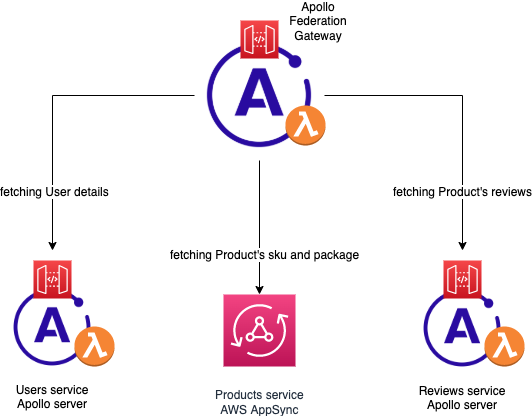Front-End Web & Mobile
Category: Technical How-to
Apollo GraphQL Federation with AWS AppSync
This article was written by Florian Chazal, Senior Specialist Solutions Architect, AWS Update (August 2022): This blog post has been updated to comply with the new Apollo Federation spec v2.0. If you are migrating from v1 check the official documentation. Apollo Federation is an architecture and specification used to build and connect multiple distributed backend […]
Client-side Caching Strategies for a Next.js app with AWS Amplify
This post builds on the initial posts in this series, Build a Product Roadmap with Next.js and Amplify, where we built an admin page for product managers to login and update the roadmap and then updated the app to add storage of documents. In this post, we’ll adapt the product management application to include a caching layer […]
Share code between Next.js apps with Nx on AWS Amplify Hosting
In this post, we will explore the capabilities of AWS Amplify Hosting to interface with monorepos, specifically Nx, and deploy the frontend applications that reside in them. We’ll learn the benefits of using a monorepo through an example of multiple banking websites that use the same mortgage calculator made up of libraries and components that […]
5 Next.js features that are better with AWS Amplify
Next.js is a popular React framework that enables server-side rendering and static site generation for React apps. When combined with AWS Amplify, a set of purpose-built tools and features that enables frontend web and mobile developers to quickly and easily build full-stack applications on AWS, developers can build some really powerful apps. Here are 5 Next.js features that […]
Next.js API Routes with AWS Amplify
Next.js is a popular React framework that enables server-side rendering and static site generation for React apps. It makes building full-stack React apps incredibly simple. Developers love Next.js over other solutions because it handles a lot of the difficult configuration required for server-side rendering and static site generation automatically. It has builtin support for styling, […]
Introducing Merged APIs on AWS AppSync
AWS AppSync is a serverless GraphQL service that makes it easy to create, manage, monitor and secure your GraphQL APIs. Within an AppSync API, developers can access data across multiple different data sources including Amazon DynamoDB, AWS Lambda, and HTTP APIs. As the service continues to grow in adoption, our customers have faced challenges related […]
Access your private network from real mobile devices using AWS Device Farm
Testing a mobile or web app on a real device often requires a secure connection to private endpoints. These endpoints are often hosted on AWS inside a VPC, on-premises, a cloud provider, or a mix of those configurations. In addition, you may want the host machines, to which your devices are connected, to be able […]
Automate Testing with Authentication using AWS Amplify and Cypress
Note: This post is an update and extension to a previous blog post “Running end-to-end Cypress tests for your fullstack CI/CD deployment with Amplify Console“ Overview Automating the process of building, testing, and deploying software allows for faster delivery of high-quality software and can help reduce the risk of errors, as developers can catch and […]
Introducing Private APIs on AWS AppSync
AWS AppSync is a fully managed service that enables developers to create GraphQL APIs that can securely access, manipulate and combine data from one or more data sources. When you create a GraphQL API on AppSync, a public endpoint will be generated which can be used to send queries, mutations and subscriptions requests to the […]
Benchmarking your Mobile App with Rooted Android Private Devices and AWS Device Farm
Until recently, the primary reasons for rooting an Android device were to install custom ROMS, themes, or have access to file explorer on the device. Now, however, rooting devices is not just for customization but also unlocks utilities that help analyze and improve the performance of your app. With the launch of support for rooted […]









